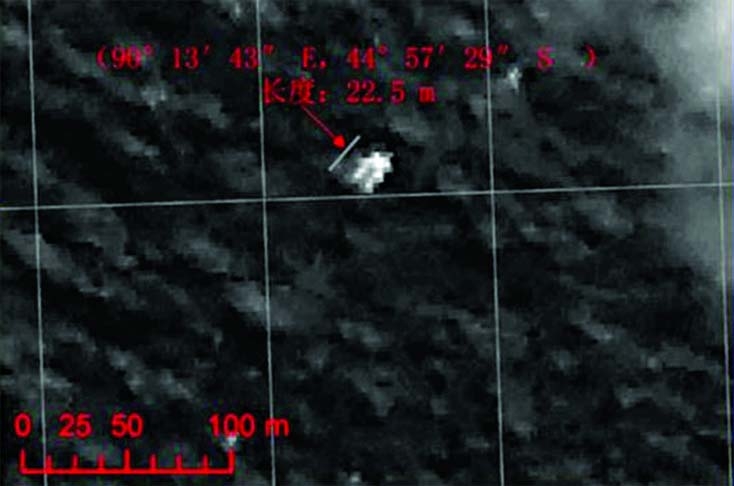
Reuters, Australia :
Chinese satellites have spotted a new object in the southern Indian Ocean that could be wreckage from a missing Malaysian airliner carrying 239 people, and ships are on their way to investigate, China and Malaysia said on Saturday.
The object, around 22 meters long (74ft) and 13 meters (43ft) wide, was spotted early on March 18 around 120 km (75 miles) from a location where possible debris was sighted by another satellite on March 16 in the remote ocean off western Australia, China’s State Administration of Science, Technology and Industry for National Defense (SASTIND) said on its website.
The Chinese sighting was first revealed by Malaysia’s Defence Minister and acting Transport Minister Hishammuddin Hussein, who was handed a note with details during a news conference in Kuala Lumpur.
“Chinese ships have been dispatched to the area,” Hishammuddin said.
China said an image of the object had been captured by its high-definition earth observation satellite “Gaofen-1”. The location was south by west of the possible debris announced by Australia on Thursday, SASTIND said.
The latest possible lead in the hunt for the jetliner comes two weeks after it disappeared from civilian radar screens less than an hour after taking-off from the Malaysian capital on a scheduled flight to Beijing.
Searches by more than two dozen countries have so far turned up little but frustration and fresh questions about Malaysia Airlines Flight MH370.
The international search for the plane has in recent days focused on the southern Indian Ocean far off Australia’s western coast after satellite images captured floating objects that investigators believed could be parts of an aircraft.
Six aircraft and two merchant ships have been scouring the area, but there were no reports of any wreckage being found. Australia, which announced the first satellite image and is coordinating the rescue, has cautioned the objects might be a lost shipping container or other debris and may have since sunk.
“Even though this is not a definite lead, it is probably more solid than any other lead around the world and that is why so much effort and interest is being put into this search,” Deputy Prime Minister Warren Truss told reporters, before latest Chinese report.
According to several people familiar with the matter, India has told Malaysian investigators that it had found no evidence the plane flew through its airspace, making the satellite debris lead more solid.
It was the first formal notification that India had come up empty-handed after checking its radar records, the sources said. China, Japan and India were sending more planes and Australian and Chinese navy vessels were also steaming towards the southern zone, more than 2,000 km (1,200 miles) southwest of Perth.
Weather conditions were good, with 10 km (6 miles) of visibility, according to officials – a crucial boost for a search that is relying more on human eyes than the technical wizardry of the most advanced aircraft in the world.
Aircraft and ships have also renewed the search in the Andaman Sea between India and Thailand, going over areas in the northern corridor that have already been exhaustively swept to find some clue to unlock one of the biggest mysteries in modern aviation.

